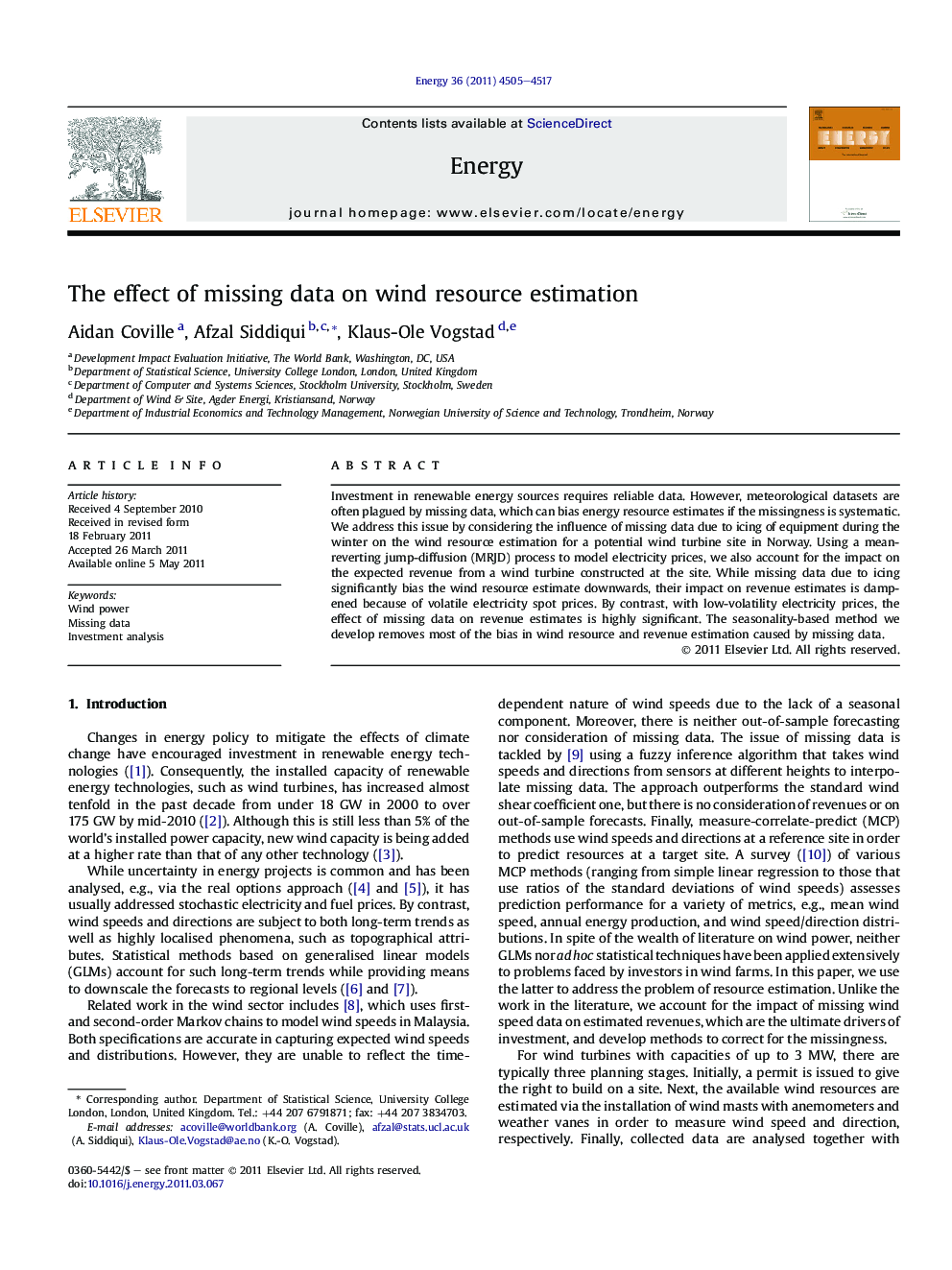| Article ID | Journal | Published Year | Pages | File Type |
|---|---|---|---|---|
| 1734210 | Energy | 2011 | 13 Pages |
Investment in renewable energy sources requires reliable data. However, meteorological datasets are often plagued by missing data, which can bias energy resource estimates if the missingness is systematic. We address this issue by considering the influence of missing data due to icing of equipment during the winter on the wind resource estimation for a potential wind turbine site in Norway. Using a mean-reverting jump-diffusion (MRJD) process to model electricity prices, we also account for the impact on the expected revenue from a wind turbine constructed at the site. While missing data due to icing significantly bias the wind resource estimate downwards, their impact on revenue estimates is dampened because of volatile electricity spot prices. By contrast, with low-volatility electricity prices, the effect of missing data on revenue estimates is highly significant. The seasonality-based method we develop removes most of the bias in wind resource and revenue estimation caused by missing data.
► We address the impact of missing wind speed data from exploratory wind masts in Norway. ► We contribute to investment analysis of renewable energy projects via seasonality-based statistical methods to remedy systematic biases in the resource assessment. ► Our method imputes the missing data well in out-of-sample tests. ► The bias in resource assessment due to missing data is significant, but the bias on revenue is insignificant. ► However, revenue bias may be severe with low-volatility electricity prices, which our method can treat well.
